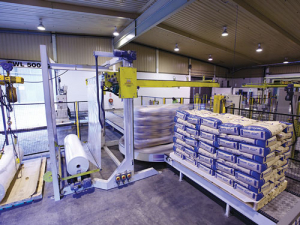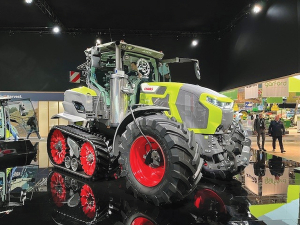The milk powder manufacturing industry is in a ‘mature phase’ of its economic life cycle, an Australian report says.
However the outlook for the next five years for the milk powder industry globally is more positive than the last five years, IBISWorld senior analyst Nathan Cloutman told Dairy News.
Prices rose to a peak in 2013-14 then dipped suddenly the next year and are only just starting to recover.
But volatility will be ongoing for the next five years.
The Australian and New Zealand industries both export about 90% of their product so are exposed to similar influences, he says.
The industry’s contribution to the Australian economy is expected to fall at an annualised 0.9% over 10 years through to 2021-22, says the report from IBISWorld, a business intelligence and research company, on Milk Powder Manufacturing in Australia.
“Typically, an under-performance is indicative of a declining industry, which is shrinking as a share of the economy,” it says.
“The industry is well established, with brand names and producers that have been in operation for many years. The rudimentary nature of production makes it difficult for producers to be particularly inventive with their product lines or formulations.
“Consequently, the industry appears to be in a mature life cycle phase.”
However, given the significant portion of revenue generated by exports, there remains some room for growth and innovation, the report says.
“Volume growth is expected to be the dominant driver of industry growth... which is supported by rising demand for milk products in Asia.”
Cloutman says milk powder prices are expected to make only a minor recovery during 2016-17. Milk powder especially relies on global markets and in Australia, like New Zealand, it is 90% exported.
Profit margins have fallen in the past five years for Fonterra Australia, as for other dairy companies.
“But we are predicting Fonterra’s and the industry’s performance will be a bit more positive as the oversupply starts to rebalance and we see more demand from China, particularly for infant milk formula.
“We are starting to see a rise in prices but it hasn’t been felt as strongly in Australia at the moment.”
Australian farmers were slower to feel the effects of the global slowdown in prices as Fonterra and MG were protecting farmers.
“Then it just hit them, he says.
Milk producers have reduced their milk powder production, he says.
But strong demand is predicted from China and Asia over the next five years. Because of the growing middle class and the free trade agreements signed by Australia with Asian countries, tariffs on milk powder will begin to be reduced.
Those will reduce slowly until 2026 so that will increase the competitiveness of Australia milk powder.
“Global over-production will start to rebalance, and EU production plateau, so that has also been factored into our slightly more positive outlook for the next five years -- more positive than what has happened over the last five years.
“This mainly pertains to Australia but can also be seen globally. A couple of years ago there was oversupply. It is starting to become more positive.”
New markets include South East Asia – Indonesia is becoming a big one – and the Middle East.
Free trade agreements will open up markets. There’s bigger demand for Australian product in Thailand and Vietnam with a growing middle class.
Australian produce, the same as New Zealand produce, is marketed over there as high quality.
“But milk powder is highly internationally exposed. Milk powder is so reliant on global price it will be reliant on global matters such as supply and production and demand.
“Volatility will continue, depending on global factors.”
The industry is highly concentrated. The larger players in Australia are looking to expand more into global markets, and also take more of the domestic industry.
Chinese companies are starting to invest in Australia to cater for their own market. Australian trade barriers with China, its biggest export market, are falling.
The Australian and New Zealand markets are fairly similar in that they are based on milk powder and export markets in both countries.


















